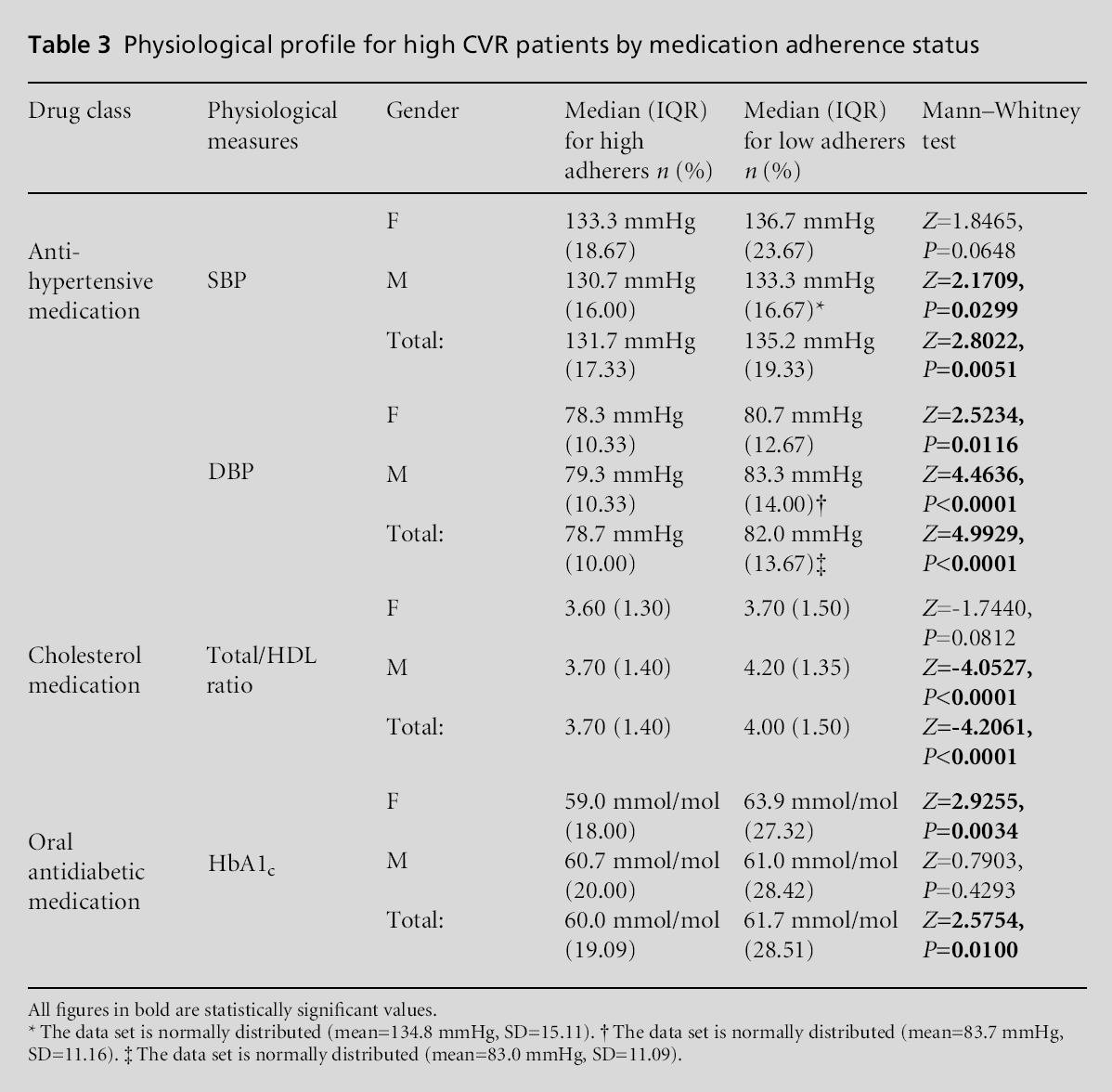Research Article - (2013) Volume 21, Issue 6
Continuing analysis of the primary care data used in the above paper revealed inconsistencies in how the source systems recorded cholesterol measurements which had not previously been noticed. This is reflected in the following corrected paragraphs and table.
Among the 1201 high-CVR patients, 1167 (97%) had at least three SBP and DBP readings in the past five years and 84% had three BP readings within a window of 15 months (i.e. the latest BP measurement was taken no later than 15 months after the first of three more recent BP readings), 1178 (98%) had total-to- HDL cholesterol ratio results and 1057 (88%) had HbA1c results. The majority of the latest measurements were taken within the last 12 months (94% of BP readings, 75% of lipid results and 76% of HbA1c results). Within the high-CVR group, compared with men, women had a significantly higher SBP and higher HbA1c, but lower Total-to-HDL cholesterol ratio; no significant gender difference in the DBP was observed (median SBP: men = 131.3 mmHg, IQR = 16.67, women = 135.0 mmHg, IQR = 19.67, Wilcoxon– Mann–Whitney test Z = 3.7394, P = 0.0002; median HbA1c: men = 50.0mmol/mol, IQR = 18.83, women = 53.0 mmol/mol, IQR = 21.86, Wilcoxon–Mann– Whitney test Z = 3.6385, P = 0.0003; median Total/ HDL ratio: men = 4.20, IQR = 1.60, women = 3.80, IQR=1.50, Wilcoxon–Mann–Whitney testZ=–5.4033, P<0.0001; median DBP: men = 80.0 mmHg, IQR = 12.00, women = 80.0 mmHg, IQR = 13.33,Wilcoxon– Mann–Whitney test Z = –0.8310, P= 0.4060.
The high-CVR patients who were prescribed antihypertensive, cholesterol-lowering, and/or oral antidiabetic medication in the last two years (irrespective of their adherence status) were found to have a higher SBP (with no significant difference in DBP) and higher HbA1c than those not on treatment, but a lower mean total-to-HDLcholesterol ratio than those not on treatment (median SBP: treated = 133.3 mmHg, IQR = 18.67, not treated = 130.0 mmHg, IQR = 18.17, Wilcoxon–Mann–Whitney test Z = –2.6450, P = 0.0082; median DBP: treated = 80.0 mmHg, IQR = 13.33, not treated = 80.0 mmHg, IQR = 11.33, Wilcoxon–Mann–Whitney test Z = 0.3924, P = 0.6947; median total-to-HDL ratio: treated = 3.90, IQR = 1.50, not treated = 4.40, IQR = 1.70, Wilcoxon– Mann–Whitney test Z = –5.0557, P < 0.0001; median HbA1c: treated = 60.0 mmol/mol, IQR = 21.09, not treated = 44.3 mmol/mol, IQR = 6.56, Wilcoxon– Mann–Whitney test Z = –20.5009, P < 0.0001). Those patients who adhered to medication had better results (lower SBP, DBP, total-to-HDL cholesterol and HbA1c) than non-adherers (see Figures 3–5 and Table 3). This effect was also seen when the data were assessed for each gender separately (although not statistically significant for HbA1c in men, or for SBP or total-to-HDL cholesterol in women).
